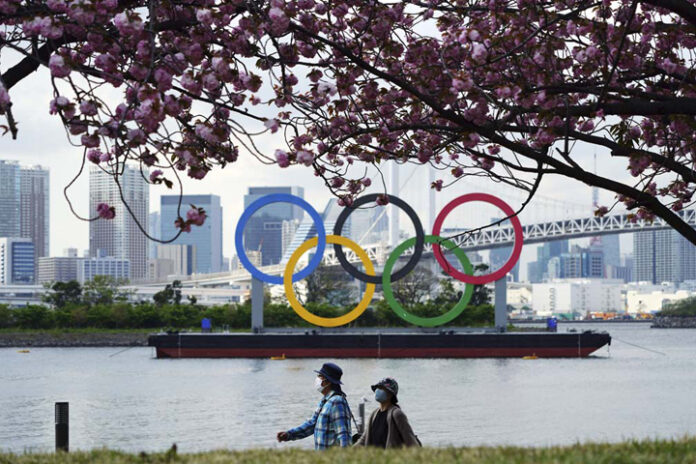
TOKYO—The Tokyo Olympics are getting closer and things are starting to stir around the venues, though not as much as you might expect.
Many preparations are still up in the air as organizers try to figure out how to hold the postponed games in the middle of a pandemic.
Much of the city will be watching Wednesday as the countdown clocks around town hit the 100-days-to-go mark.
The new national stadium in the heart of Tokyo exemplifies the state of preparations. Kengo Kuma’s $1.4 billion venue is still largely sealed off to outsiders by a white wall that circles the stadium.
Over the weekend, passersby could hear rumblings from inside the venue—possible practice for the opening ceremony on July 23. The Paralympics follow on August 24.
There is little movement around the Athletes’ Village, located near Tokyo Bay. The village will be tightly controlled during the Olympics, operating largely as a bubble for 11,000 Olympic athletes and 4.400 Paralympic athletes.
Athletes will be told not to socialize, to refrain for any tourism, and to come late and leave early to reduce the risks of spreading the virus.
The new aquatic center, also near Tokyo Bay, just finished holding Japan’s national swimming championships. It’s already had a test run and has yielded a big story.
Japanese swimmer Rikako Ikee, a 20-year-old survivor of leukemia, finished first in four races and qualified for the Olympics.
She was one of the world’s best swimmers until she was diagnosed two years ago with leukemia. She had said her plans were to aim for the 2024 Paris Olympics, but her performances have surprised almost everyone.
Ikee is sure to be a big star in Tokyo—even if she fails to win a medal. She won six gold medals in the 2018 Asian Games in Jakarta and was getting very close to breaking the world record in the 100-meter butterfly—her best event. The torch relay, meanwhile, ran through a mostly empty Osaka City park on Tuesday, showing the risks of trying to hold the postponed games during a pandemic.
It came on the same day that new coronavirus cases reportedly hit 1,000 for the first time in Japan’s second largest metropolitan area.
The torch relay began three weeks ago in northeastern Japan, attempting to navigate around the pandemic with a total of 10,000 runners crisscrossing the country and bound for the opening ceremony on July 23 in Tokyo.
Osaka, which announced plans last week to take the relay off city streets and bar the public, became the first detour since the relay began. Organizers warned beforehand there may be more.
Wednesday’s second leg in Osaka will be in the same park under the same closed-doors conditions.
New Covid-19 cases are rising across Japan, where fewer than 1 percent of residents have been vaccinated in very slow rollout. Japan has attributed about 9,500 deaths to Covid-19, far fewer than many countries but higher than most neighbors in Asia.
Many runners arrived in Osaka’s Expo ‘70 Commemorative Park by bus and ran short legs carrying the torch alongside metal barriers or in empty park space.
They were accompanied by security officials who jogged or walked alongside, and followed by an escort” or “promotional” vehicle festooned with logos of major Olympic sponsors Coca-Cola and Toyota.
After the postponement a year ago, organizers talked of doing away with the relay to save money. That idea never gained traction, largely because it’s promoted by some of the International Olympic Committee (IOC) largest sponsors.
The top sponsors paid the IOC $1 billion in the last full Olympic cycle (2013-2016). That number could double when the next cycle is completed with the postponed Tokyo Games.
Image credits: AP
Read full article on BusinessMirror
